Croatia's Magnificent UNESCO World Heritage
August - 2024
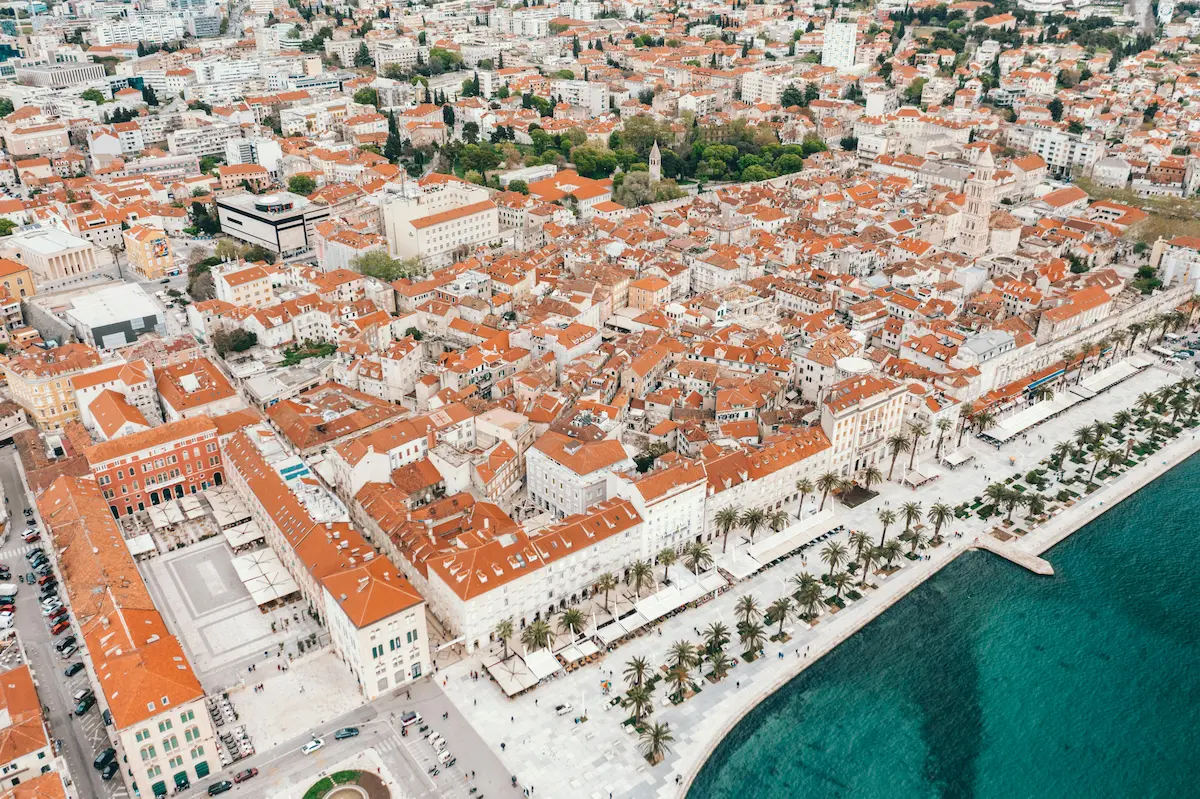
Croatia is a captivating destination that seamlessly blends ancient wonders with breathtaking natural beauty. This small yet culturally rich nation boasts an impressive array of UNESCO World Heritage sites, each one a testament to its diverse history, architectural marvels, and pristine landscapes.
From the enchanting Old Town of Dubrovnik to the awe-inspiring Plitvice Lakes National Park, Croatia's UNESCO-designated gems are sure to leave an indelible mark on every traveler's soul.
If you're planning a visit to Croatia, it's definitely worth considering a day cruise with Junior Excursions from Split, which serves as an excellent base for exploring the nearby islands and their hidden treasures.
1. Diocletian's Palace in Split
Nestled in the heart of Split, Diocletian's Palace stands as an awe-inspiring testament to Roman architectural prowess. Constructed in the early 4th century AD, this magnificent complex served as the retirement residence for the Roman Emperor Diocletian. Today, it is a living museum, with its intricate carvings, imposing gates, and sprawling courtyards seamlessly blending with the vibrant modern city that has grown within its walls.
Exploring the Palace's labyrinth of narrow streets and grand squares is like stepping into a time capsule, where ancient history and contemporary life coexist harmoniously. The Peristyle, a central courtyard adorned with ornate columns and a striking sphinx, is a highlight, showcasing the opulence of Roman aristocracy.
Visitors can also marvel at the Cathedral of St. Domnius, a remarkable structure that was once the mausoleum of Diocletian himself. Its unique octagonal shape and towering bell tower, constructed from the same brilliant white stone as the rest of the palace, are truly awe-inspiring.
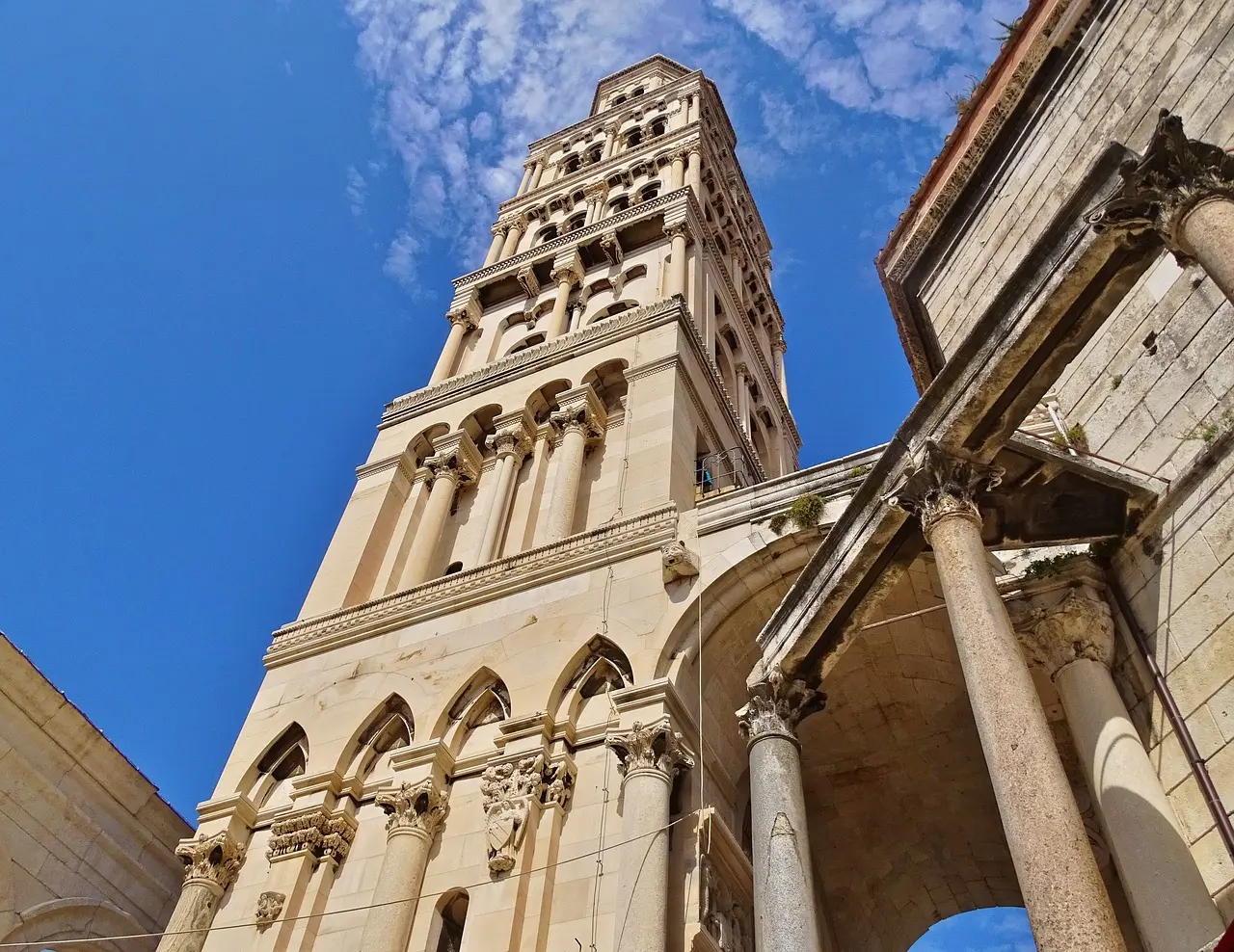
2. Croatia's Beech Forests
Croatia has UNESCO World Heritage status for its primeval beech forests, which are some of Europe's last remaining. These ancient woodlands, found in various regions of the country, provide a rare glimpse into untouched wilderness. In Velebit National Park, the Hajdučki and Rožanski Kukovi forests showcase these landscapes.
Towering beech trees, some centuries old, create an emerald green canopy that filters sunlight and casts mesmerizing patterns on the forest floor. Hiking trails allow visitors to immerse themselves in the serene ambiance and listen to the symphony of nature.
Paklenica National Park also has two protected areas of primeval beech forests – Suva Draga-Klimenta and Glavinovac-Javornik. These ancient woodlands are a biodiversity haven, housing numerous species of flora and fauna, including rare birds and mammals.
3. St. James Cathedral in Šibenik
The Cathedral of St. James in Šibenik is an architectural masterpiece, blending Gothic and Renaissance styles. It is on the UNESCO World Heritage list. Constructed entirely from stone, it took over a century to complete.
The facade is adorned with intricate carvings and sculptural details depicting Bible stories and local folklore. The interior has vaulted ceilings and stained-glass windows. The Cathedral's innovative use of stone slabs and tie-beams allowed for larger, more open spaces, making it a true masterpiece of human creativity and engineering.
4. Plitvice Lakes National Park
Nestled in the heart of Croatia's lush interior, Plitvice Lakes National Park is a captivating natural wonderland. This UNESCO-designated natural heritage site is renowned for its turquoise cascades, emerald pools, and mesmerizing tapestry of colors and textures. As visitors explore the park's well-maintained trails, they are treated to a stunning display of nature's artistry.
Sixteen interconnected lakes, each more beautiful than the last, are separated by cascading waterfalls that flow over travertine barriers, creating a symphony of rushing water and mist-filled air.
The lakes themselves are a kaleidoscope of colors, ranging from deep emerald greens to brilliant turquoise hues, their shades shifting with the changing light and seasons. Surrounding these aquatic wonders are lush forests and verdant meadows, teeming with a diverse array of plant and animal life, including rare species of birds and mammals.
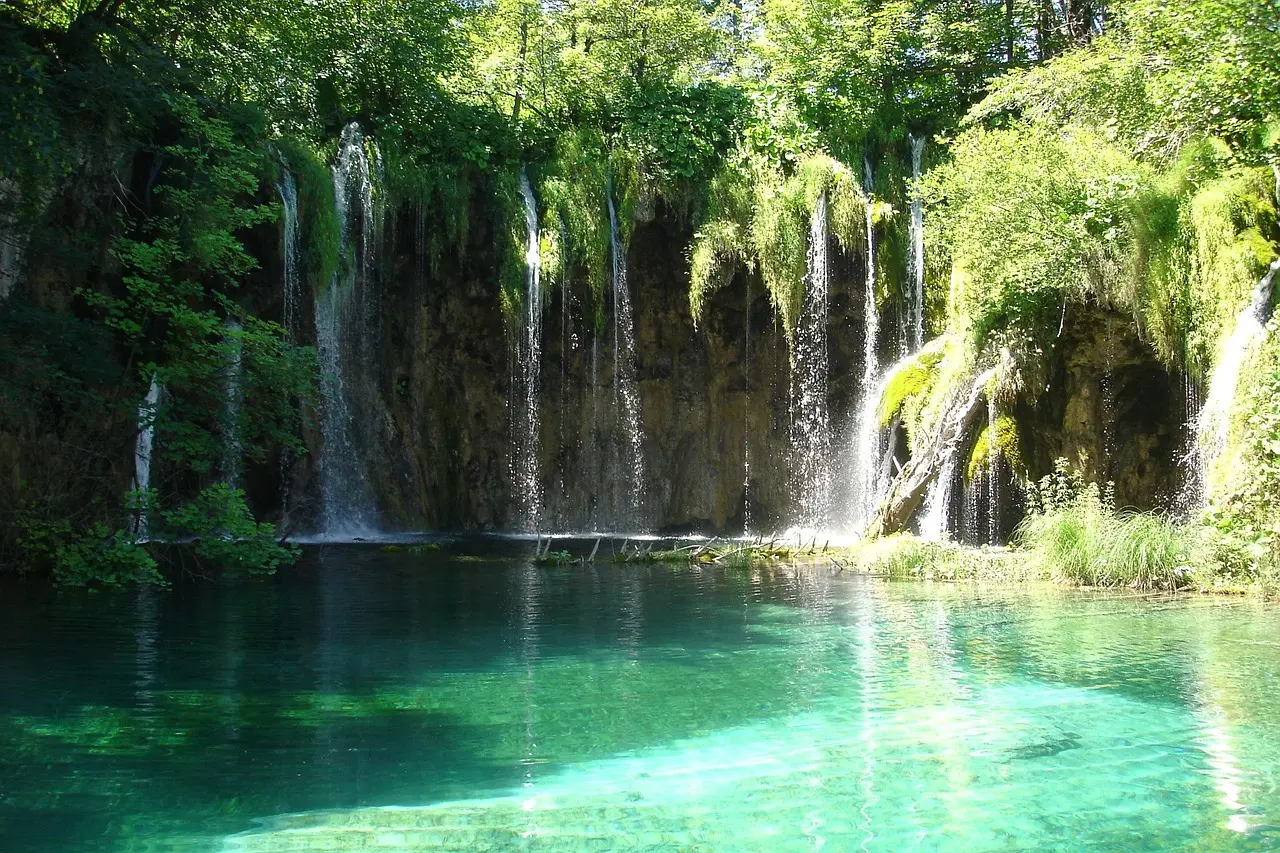
5. Historical core of Trogir
The city of Trogir is a remarkable destination that offers a glimpse into the medieval era. Its well-preserved architecture and charming narrow streets make it a living museum. Recognized as a UNESCO World Heritage site, this enchanting town on the Dalmatian coast is a must-visit for those interested in Croatia's cultural heritage.
As you explore Trogir's labyrinth of alleyways, you'll be amazed by the harmonious blend of Romanesque, Gothic, and Renaissance styles that adorn its buildings. The Cathedral of St. Lawrence, with its ornate portal and towering bell tower, is a true architectural marvel. The Loggia, a former meeting place for the city's nobility, showcases intricate stone carvings and arched colonnades.
However, Trogir is more than just a collection of historic buildings. It is a vibrant community that has successfully preserved its unique character and traditions over the centuries. Locals continue to live their daily lives in spaces that have been occupied for generations, adding authenticity and vibrancy to this enchanting town.
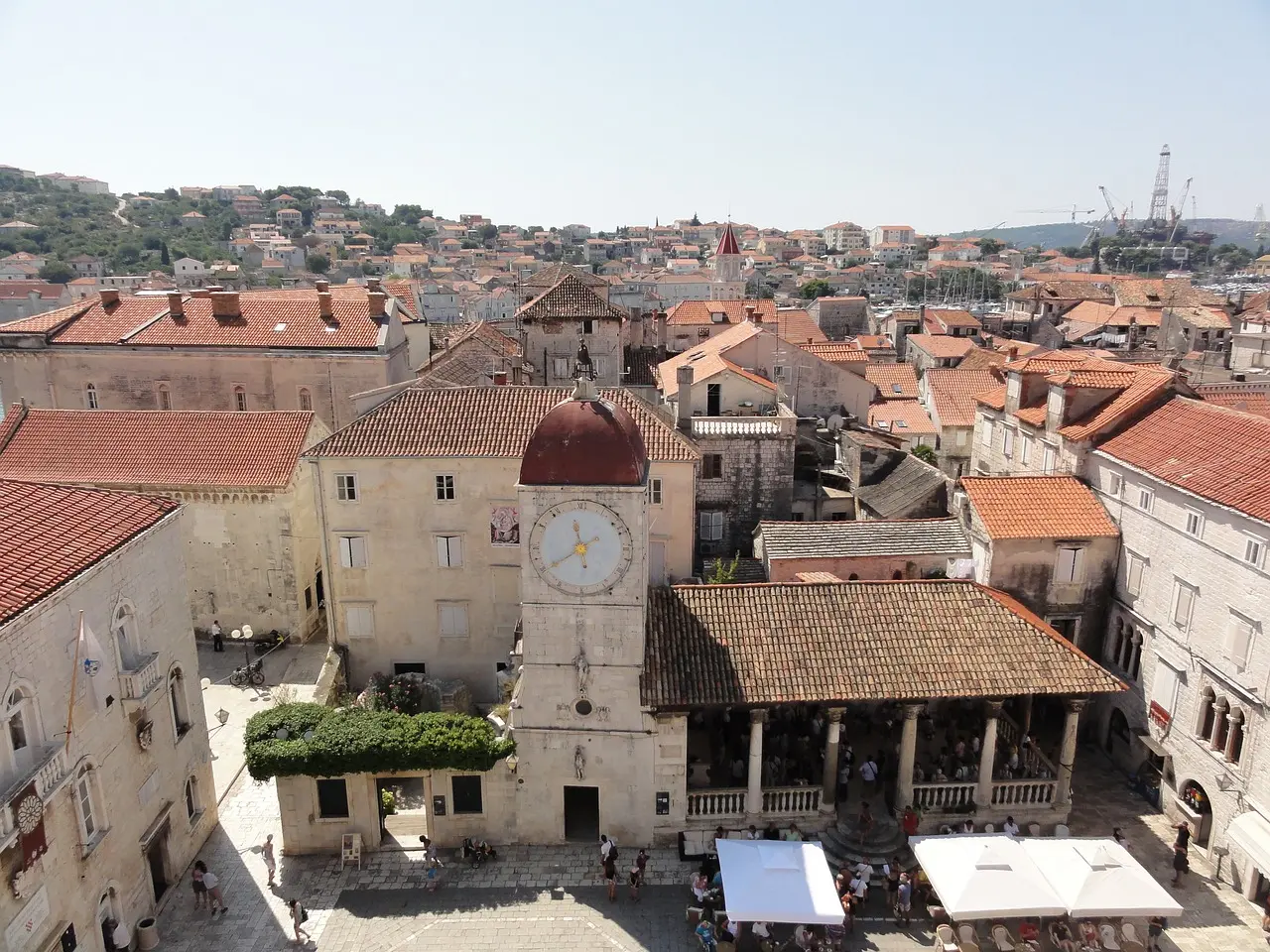
6. The Euphrasian Basilica
The Euphrasian Basilica in the historic city of Poreč is a true masterpiece of Byzantine art and architecture, a stunning example of the fusion of Eastern and Western cultural influences that has earned it a place on the UNESCO World Heritage list.
As visitors approach this magnificent structure, they are immediately struck by its imposing façade, adorned with intricate mosaics and sculptural details that hint at the treasures within. Upon entering, the Basilica's interior reveals a breathtaking display of Byzantine artistry, with its walls and ceilings covered in vibrant mosaics depicting religious scenes and intricate geometric patterns.
The centerpiece of this artistic wonder is the Basilica's apse, a semicircular space that houses a magnificent mosaic depicting the Virgin Mary and Child, surrounded by a celestial court of angels and saints. This masterpiece, dating back to the 6th century, is a true testament to the skill and craftsmanship of the Byzantine artists who created it.
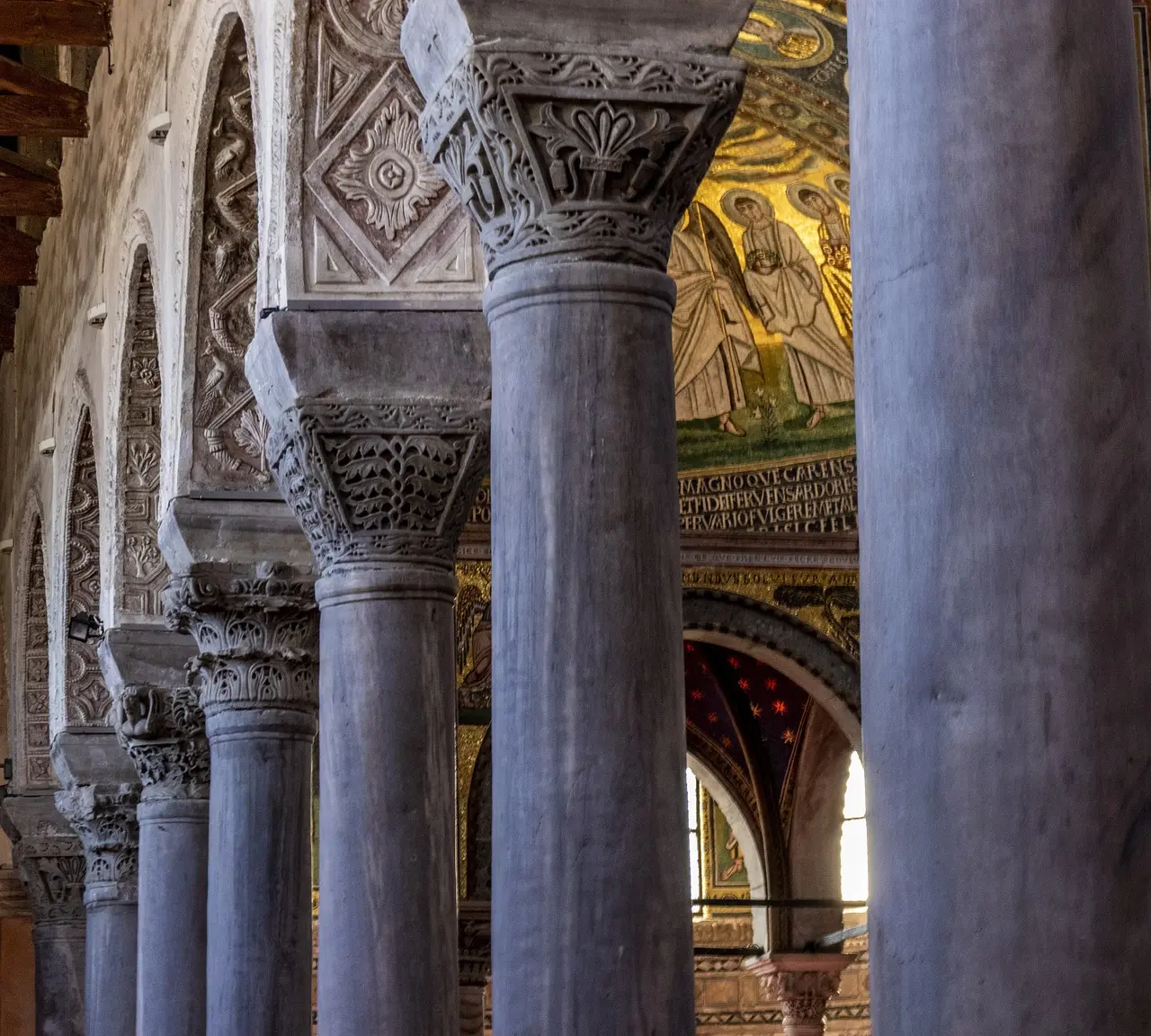
7. Dubrovnik Old Town
The Old Town of Dubrovnik is a true living fairy tale, a perfectly preserved medieval city that has earned its reputation as the "Pearl of the Adriatic." Recognized as a UNESCO World Heritage site, this enchanting destination is a must-visit for anyone seeking to immerse themselves in Croatia's rich cultural heritage.
As you approach Dubrovnik's imposing city walls, you'll be struck by their sheer grandeur and the sense of history that permeates every stone. These fortifications, which stretch for nearly two kilometers along the coastline, have stood as a formidable defense against invaders for centuries, offering a glimpse into the city's strategic importance throughout history.
Once inside the Old Town, you'll find yourself transported to a world of narrow, winding streets, charming squares, and magnificent palaces and churches. The Stradun, the main thoroughfare, is a bustling hub of activity, lined with cafes, shops, and street performers, while the Rector's Palace and the Franciscan Monastery offer a glimpse into the city's rich architectural heritage.
Dubrovnik is not only a stunning UNESCO World Heritage site but also holds a special place in pop culture as it served as a key filming location for the iconic series Game of Thrones, bringing the fantasy world of King's Landing to life.
But Dubrovnik is more than just a collection of historic buildings – it's a living, breathing community that has managed to preserve its unique character and traditions over the centuries. Locals go about their daily lives in the same spaces that have been occupied for generations, adding a sense of authenticity and vibrancy to this enchanting city.
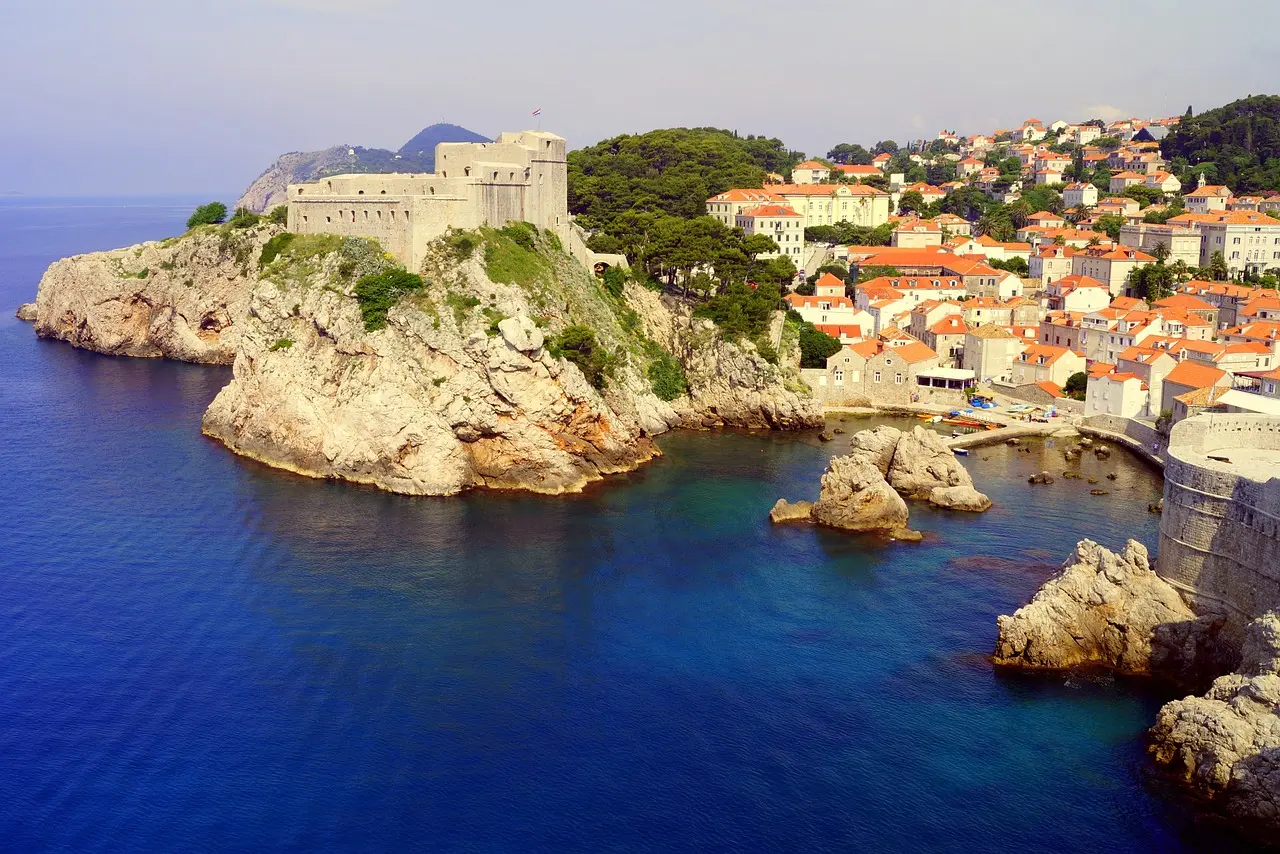
8. Stari Grad Plain
The Stari Grad Plain on the island of Hvar is a true living museum, a testament to the ingenuity and sustainability of ancient Greek agricultural practices. This UNESCO-designated site is a unique and well-preserved example of an ancient Greek cadastral system, a meticulously planned network of stone walls and terraces that have been in use for over 2,400 years.
As visitors explore the Stari Grad Plain, they are struck by the intricate patterns of stone walls and terraces that crisscross the landscape, creating a harmonious blend of natural and man-made elements. These ancient structures were designed to maximize the use of land and water resources, allowing for the cultivation of crops and the production of wine and olive oil, which have been integral to the local economy for centuries.
But the Stari Grad Plain is more than just a relic of the past – it's a living, breathing example of sustainable agriculture that continues to thrive today. Local farmers still tend to the ancient vineyards and olive groves, using traditional methods that have been passed down through generations, ensuring the preservation of this unique cultural heritage.
9. Stećci Medieval Tombstones
The Stećci Medieval Tombstones are a unique and fascinating glimpse into the cultural heritage of the Balkans, a collection of intricately carved monolithic tombstones that date back to the 12th century. Scattered across Bosnia and Herzegovina, Croatia, Montenegro, and Serbia, these ancient burial sites have been recognized as a UNESCO World Heritage site, a testament to their cultural and historical significance.
As visitors explore the Stećci sites, they are immediately struck by the sheer size and complexity of these monolithic tombstones, some of which tower over six meters in height. Each one is intricately carved with a variety of decorative motifs and inscriptions, representing a fusion of medieval Christian and pre-Christian traditions that were unique to the region.
These ancient burial sites offer a fascinating glimpse into the lives and beliefs of the people who once inhabited the Balkans, revealing a rich tapestry of cultural influences and traditions that have been largely forgotten over the centuries. The Stećci tombstones are not only a remarkable artistic achievement but also a tangible link to a past that has left an indelible mark on the region's cultural heritage.
The Venetian Works of Defense
Along the rugged Adriatic coastline, a series of imposing fortifications stand as a testament to the strategic military prowess of the Venetian Republic during the 16th and 17th centuries. These Venetian Works of Defense, recognized as a UNESCO World Heritage site, are a remarkable feat of engineering and architecture, designed to protect the republic's maritime trade routes and coastal settlements from potential invaders.
Spanning three countries – Croatia, Italy, and Montenegro – these fortifications include impressive structures such as the Defensive System of Zadar and the Fort of St. Nikola in Šibenik-Knin County. Visitors can explore the intricate network of walls, bastions, and towers that were meticulously constructed to withstand the most formidable of attacks.
As you wander through these ancient fortresses, you'll be struck by the sheer ingenuity and resourcefulness of the Venetian engineers who designed them. Each structure was strategically positioned to take advantage of the natural terrain, with carefully planned lines of sight and defensive positions that maximized their effectiveness against potential threats.
But these fortifications are more than just relics of a bygone era – they are living monuments to the enduring spirit of human resilience and ingenuity. Today, they offer visitors a unique opportunity to step back in time and experience the rich history and cultural heritage of the Venetian Republic.
A nation where limited borders contain limitless historical wonders
Croatia's UNESCO World Heritage sites, both those already recognized and those on the Tentative List, offer a truly remarkable journey through the country's rich cultural and natural treasures. From the awe-inspiring architectural wonders of Diocletian's Palace and the Old Town of Dubrovnik to the pristine natural beauty of the Plitvice Lakes and the primeval beech forests, each site is a testament to the enduring spirit and ingenuity of the Croatian people. Whether you're a history buff, an architecture enthusiast, or simply a lover of breathtaking natural landscapes, Croatia's UNESCO-designated gems are sure to leave an indelible mark on your soul, offering a truly unforgettable and enriching experience.